5 Controversial Treatments for Autism and What You Need To Know

- The brain development of autistic children differs from that of non-autistic children.
- Autism spectrum disorder isn’t an illness but a neurological condition with no current cure.
- Early misconceptions about autism spectrum disorders led to ineffective treatments like psychoanalysis and institutionalization.
- More humane, research-based approaches like ABA and complementary therapies like physical therapy, sensory integration therapy, music therapy, and arts therapy emerged in the 1960s.
- Today, some alternative therapies that stir controversy, mainly due to the potential risks and lack of conclusive evidence in many cases, are popular among families with autistic children as a result of positive anecdotal results.
Discovering that your child is on the autism spectrum can bring up countless questions. The most pressing probably being how to help them navigate daily life.
Thankfully, a long list of treatments exists.
However, deciding which one is best for your family and child is another complicated part following this diagnosis. Medication, behavioral management therapy, and occupational therapy are some of the most common treatments.
But if you’re interested in trying something new, there are several controversial alternative treatments for autism you might consider.
There’s still a lot of debate in both the medical community and among families like yours about these experimental treatments.
Below, we cut through the noise and bring you the information you need to understand the controversies they stir, what each treatment entails, and what experts say.
Historical Perspective and the Rise of Controversial Treatments
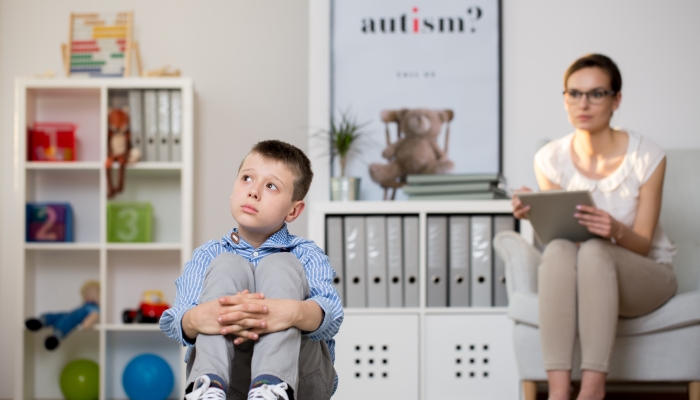
Leo Kanner and Hans Asperger recognized autism as an independent disorder in the early 20th century. Initially, it was believed that autism spectrum disorder (ASD) was caused by a lack of mainly maternal care.
This led to treatments like psychoanalysis, which involves exploring past experiences that might have shaped autistic behaviors. Another standard treatment involved placing autistic patients in a care facility with rules and routines, often far away from home.
Both of these methods were ineffective and sometimes even harmful.
Treatments only became more humane and research-based by the 1960s when clinical psychologist Ivar Lovaas suggested applied behavior analysis (ABA) as a treatment model.
Speech and language therapy, occupational therapy, and social skills training became widely used.
Recent studies11. Recent Studies Highlight the Effectiveness of ABA Therapy for Children with Autism. Harsha Autism Center. 2023. https://harshaautism.com/recent-studies-highlight-the-effectiveness-of-aba-therapy-for-children-with-autism continue to support ABA therapy for autistic children. However, other complementary and alternative therapies are on the rise. These often promise incredible improvements and ways to alleviate autism-related challenges.
As a parent, it’s normal to want to help your autistic child in any way you can, but autism is complex, and there’s no current cure.
There’s a lot of controversy surrounding alternative therapies that you need to keep in mind before considering these. Most controversial treatments lack conclusive evidence to support their effectiveness and safety. An even bigger concern is that providers may exploit vulnerable families desperate for solutions.
Here’s a closer look at 5 controversial treatments for children with autism:
Treatment 1: Chelation Therapy
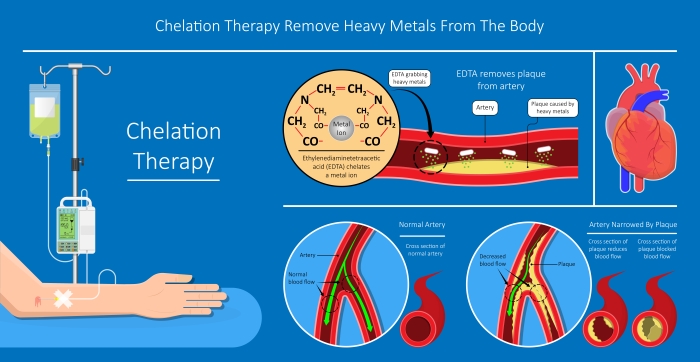
Overview and Origin
When metals like iron, lead, or mercury build up in our bodies, it can be toxic. During chelation therapy, substances that bind to these heavy metals and help remove them are administered.
Because of concerns over vaccines containing mercury-based preservatives, alternative healthcare providers recommend chelation therapy for treating autism.
Although the use of mercury-based preservatives has decreased in recent years, the fear of mercury exposure in early childhood is still prevalent.
The Controversy
Evidence linking autism and heavy metal toxicity remains inconclusive. Therefore, no scientific evidence supports the efficacy of chelation therapy as an autism treatment.
Added are safety concerns.
When children with ASD who have normal metal levels receive chelation treatment, they could suffer kidney damage, heart problems, and, in extreme cases, even death.
What Experts Say
Leading health organizations like the FDA, CDC, and AAP have expressed concerns about chelation therapy for autism.
The FDA has stated that chelation therapy22. FDA. Be Aware of Potentially Dangerous Products and Therapies that Claim to Treat Autism. U.S. Food and Drug Administration. 2019. https://www.fda.gov/consumers/consumer-updates/be-aware-potentially-dangerous-products-and-therapies-claim-treat-autism#:~:text=FDA%2Dapproved%20chelating%20agents%20are,be%20used%20under%20professional%20supervision. is approved for specific uses that don’t include autism.
Similarly, in the 2007 article Management of Children with Autism Spectrum Disorders33. Myers, S. M., & Johnson, C. P.. Management of Children With Autism Spectrum Disorders. Pediatrics. 2007;120(5), 1162–1182. https://doi.org/10.1542/peds.2007-2362, the AAP said there’s a lack of evidence supporting chelation therapy as an effective treatment for autism, with severe risks associated with it.
These organizations emphasize the importance of relying on scientifically proven, evidence-based interventions and caution against chelation therapy.
Some experts suggest that any improvements parents of autistic children notice after chelation therapy might be attributed to the placebo effect due to widespread belief in a link between autism and heavy metals.
Treatment 2: Hyperbaric Oxygen Therapy (HBOT)
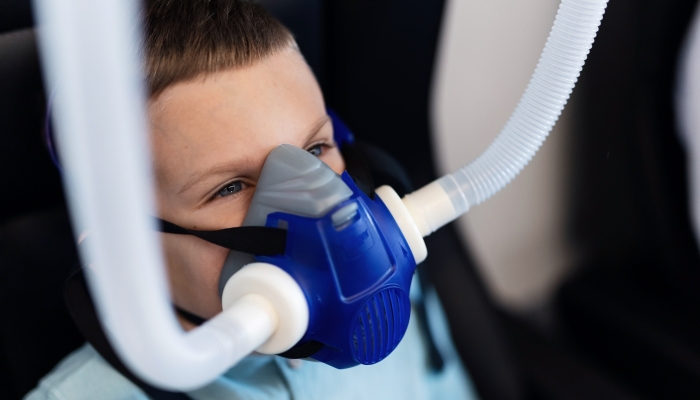
Overview and Origin
During HBOT, patients breathe pure oxygen in a pressurized room. This allows them to inhale a higher concentration of oxygen with each breath.
HBOT was developed to return oxygen levels to normal in divers who ascended to the surface too rapidly, causing nitrogen bubbles to form in their blood.
Several studies mention oxidative stress in the brains of autistic children. This has led many parents and alternative health professionals to believe that HBOT can help manage ASD.
The Controversy
The enriched oxygen environment used for HBOT has potential health benefits.
However, treating children with ASD has sparked controversy due to limited and mixed research evidence supporting its effectiveness.
A 2006 study reported improvement in the behavioral symptoms of six autistic children, while a 2009 study titled Hyperbaric Treatment for Children with Autism: A Multicenter, Randomized, Double-Blind, Controlled Trial44. Rossignol, D. A., Rossignol, L. W., Smith, S., Schneider, C., Logerquist, S., Usman, A., Neubrander, J., Madren, E. M., Hintz, G., Grushkin, B., & Mumper, E. A.. Hyperbaric treatment for children with autism: a multicenter, randomized, double-blind, controlled trial. BMC pediatrics. 2009;9, 21. https://doi.org/10.1186/1471-2431-9-21 found that autistic children who received hyperbaric treatment showed a significant improvement in various categories compared to those in the control group.
Several other controlled trials have shown no evidence55. Sakulchit, T., Ladish, C., & Goldman, R. D.. Hyperbaric oxygen therapy for children with autism spectrum disorder. Canadian family physician Medecin de famille canadien. 2017;63(6), 446–448. https://www.ncbi.nlm.nih.gov/pmc/articles/PMC5471082/#:~:text=Case%20series%20and%20randomized%20controlled,have%20yet%20to%20be%20repeated. to support the benefit of HBOT as an autism treatment.
This lack of consistent evidence has left many healthcare professionals skeptical. In addition, HBOT carries potential risks and side effects. One example is ear pain.
More serious side effects include:
- Sinus damage
- Changes in vision
- Lung collapse
- Seizures
The risk of these complications worries medical experts and highlights how important it is to carefully consider HBOT for autism.
What Experts Say
HBOT as a treatment for autism is still under investigation. Many experts call for more high-quality, well-designed trials and solid research to draw more definitive conclusions.
Before considering this treatment, speak to your child’s doctor. HBOT might not be suitable for your situation. Besides the potential risks, you should also be aware of the financial aspects. This therapy can be costly and may not be covered by insurance.
Treatment 3: Special Diets and Supplements

Overview and Origin
Special diets for autistic children originated in the 1920s when Dr. Sidney Haas developed a grain-free, low-sugar, low-lactose diet to treat celiac disease. It was then proposed that autism spectrum disorders might also be caused by toxic dietary factors.
Over the years, research has started to find connections between the gastrointestinal problems and autism. It suggests that the tiny organisms in our digestive systems might relate to autism.
Many healthcare providers believe that diets can change our digestive enzymes and overall gut environment and, hopefully, improve core symptoms of autism.
The most popular nutrient-related treatment used for autism today is a gluten-free and casein-free diet.
The Controversy
Running nutrition studies is extremely hard, and from those that have been concluded, the results have been a hit-and-miss.
While some studies suggest these diets might help with behavioral and communication problems, others show little difference.
On the other side, anecdotal stories show significant improvements.
Researchers are still trying to figure out whether putting your autistic child on a restrictive diet is worth it. The main concern is possible nutritional deficiencies.
What Experts Say
Experts in autism and nutrition stress how important it is that children receive individualized assessments before they start any special eating plan or dietary supplements.
Growing kids must get all the good stuff their bodies need, including amino acids, fatty acids, vitamin B, vitamin D, calcium, and iron.
While many experts agree that special diets and supplements show promising results, they recommend a broader range of interventions, given the mixed evidence.
Some risks associated with nutritional deficiencies can also be irreversible.
If you’re considering a restrictive diet for your autistic child, ongoing supervision by healthcare professionals who can ensure your child’s nutritional needs are met is crucial.
Treatment 4: Facilitated Communication

Overview and Origin
Facilitated communication (FC) aims to help non-verbal people or those with severe communication impairments point to letters or symbols to express their thoughts and needs.
Methods usually involve a human facilitator that supports the hand or arms of the person undergoing treatment while they use a keyboard or other communication device.
The Controversy
The primary controversy surrounding FC concerns the authenticity of the communication produced.
Critics believe there’s a high potential for the facilitator to influence or manipulate the messages, even if unintentional.
These concerns raise serious questions about the validity and effectiveness of this treatment method.
What Experts Say
Various scientific studies between 1992 and 201466. Controlled Studies. Facilitated Communication. https://www.facilitatedcommunication.org/controlled-studies have shown that it’s challenging to prove communication produced through FC is genuinely independent of the facilitator.
Many experts advise caution and recommend alternative communication methods.
These include speech therapy, picture exchange communication systems, and digital communication aids. However, some controversy surrounding these methods also exists.
If you’re considering FC for your child, remember that messages might not reflect your child’s voice, abilities, and needs.
Treatment 5: Stem Cell Therapy
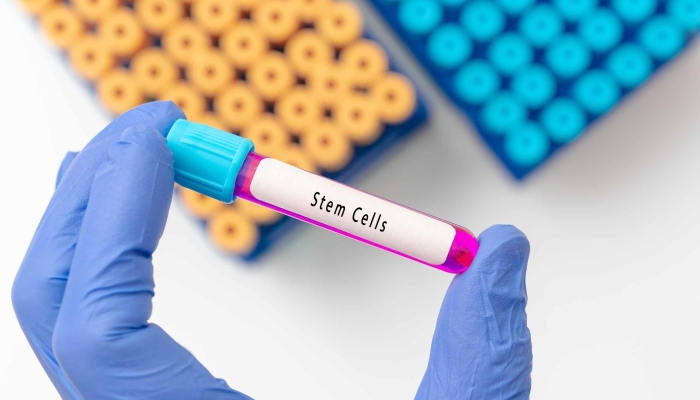
Overview and Origin
Stem cell therapy is popular for many blood, brain, and tissue-related diseases. These cells have the unique ability to develop into many different types of cells.
Exploration as a treatment for autism began in recent years. A 2022 study on the efficacy and safety of stem cell therapy77. Qu, J., Liu, Z., Li, L., Zou, Z., He, Z., Zhou, L., Luo, Y., Zhang, M., & Ye, J.. Efficacy and Safety of Stem Cell Therapy in Children With Autism Spectrum Disorders: A Systematic Review and Meta-Analysis. Frontiers in Pediatrics. 2022;10. https://doi.org/10.3389/fped.2022.897398 in children with ASD for clinical rehabilitation concluded that it might be safe and effective.
Some scientists believe stem cells can repair or replace damaged cells linked to neurological conditions like autism.
The Controversy
There are currently limited studies supporting the efficacy of stem cell therapy as a treatment for autism. Studies done so far have been small or preliminary.
This makes it difficult to draw firm conclusions.
Ethical concerns and potential risks are another drawback. Stem cell sources, treatment methods, and long-term effects are all areas of debate.
If you’re considering this treatment, remember that it’s still experimental and carries risks that aren’t fully understood yet.
What Experts Say
While ongoing research seems promising, most field experts agree that it’s still too early to reach a favorable decision on stem cell therapy for autism.
If you’re considering this treatment for your autistic child, you should approach it with caution.
Ensure that only healthcare professionals who specialize in autism are used and understand the potential benefits and risks of this method.
You should also look into the credibility and background of clinics offering this treatment, as the regulations of stem cell therapy can vary significantly.
Making Informed Decisions: Tips for Families and Caregivers

Deciding which autism treatment will be best for your child can be overwhelming. With so many options claiming various degrees of success, it’s important to make informed choices.
First and foremost, be cautious of treatments that promise rapid, miraculous results. Autism is a complex condition, and improvements are typically gradual.
Quick fixes or miracle cures often do more harm. You should always approach these skeptically and discuss them with your child’s healthcare provider before proceeding.
The importance of working with trusted healthcare professionals should also never be underestimated. This includes pediatricians, neurologists, psychologists, and other specialists experienced in autism. They can help you research and choose the most effective treatments and tailor interventions to your child’s specific needs.
Healthcare professionals will also help you lean toward treatments backed by solid scientific evidence. Evidence-based treatments are generally safer and more likely to yield positive outcomes as they’ve been tested and proven effective through controlled studies.
It can be tempting to try methods based on positive anecdotal evidence. While you shouldn’t disregard these completely, asking questions and understanding the potential risks is crucial.
As the parent or caregiver, you should actively participate in your child’s treatment process. This involves more than just signing consent forms. You should understand how treatments work, know which benefits and potential risks are associated with them, and ensure they align with your child’s needs and family values.
Discerning Hype from Hope
Wanting to find a way to ease the challenges your autistic child and family face is normal. That’s partly why the allure of controversial treatments can be strong.
These treatments are all over social media, and anecdotal reports amplify their appeal.
It’s important to remember that each child on the autism spectrum is unique, and what works for one may not work for another.
You should approach controversial treatments for autism with a blend of hope and cautious skepticism. Each carries risks alongside the benefits.
There’s no universal cure, but treatments recommended by health professionals often deliver the best results.
Your best bet is to consider the evidence and weigh the risks of any treatment you consider for your autistic child while keeping what’s best for them in mind.
References
- Recent Studies Highlight the Effectiveness of ABA Therapy for Children with Autism. Harsha Autism Center. (2023, May 10). https://harshaautism.com/recent-studies-highlight-the-effectiveness-of-aba-therapy-for-children-with-autism
- FDA. (2019, April 17). Be Aware of Potentially Dangerous Products and Therapies that Claim to Treat Autism. U.S. Food and Drug Administration. https://www.fda.gov/consumers/consumer-updates/be-aware-potentially-dangerous-products-and-therapies-claim-treat-autism#:~:text=FDA%2Dapproved%20chelating%20agents%20are,be%20used%20under%20professional%20supervision.
- Myers, S. M., & Johnson, C. P. (2007). Management of Children With Autism Spectrum Disorders. Pediatrics, 120(5), 1162–1182. https://doi.org/10.1542/peds.2007-2362
- Rossignol, D. A., Rossignol, L. W., Smith, S., Schneider, C., Logerquist, S., Usman, A., Neubrander, J., Madren, E. M., Hintz, G., Grushkin, B., & Mumper, E. A. (2009). Hyperbaric treatment for children with autism: a multicenter, randomized, double-blind, controlled trial. BMC pediatrics, 9, 21. https://doi.org/10.1186/1471-2431-9-21
- Sakulchit, T., Ladish, C., & Goldman, R. D. (2017). Hyperbaric oxygen therapy for children with autism spectrum disorder. Canadian family physician Medecin de famille canadien, 63(6), 446–448. https://www.ncbi.nlm.nih.gov/pmc/articles/PMC5471082/#:~:text=Case%20series%20and%20randomized%20controlled,have%20yet%20to%20be%20repeated.
- Controlled Studies. Facilitated Communication. (n.d.). https://www.facilitatedcommunication.org/controlled-studies
- Qu, J., Liu, Z., Li, L., Zou, Z., He, Z., Zhou, L., Luo, Y., Zhang, M., & Ye, J. (2022). Efficacy and Safety of Stem Cell Therapy in Children With Autism Spectrum Disorders: A Systematic Review and Meta-Analysis. Frontiers in Pediatrics, 10. https://doi.org/10.3389/fped.2022.897398
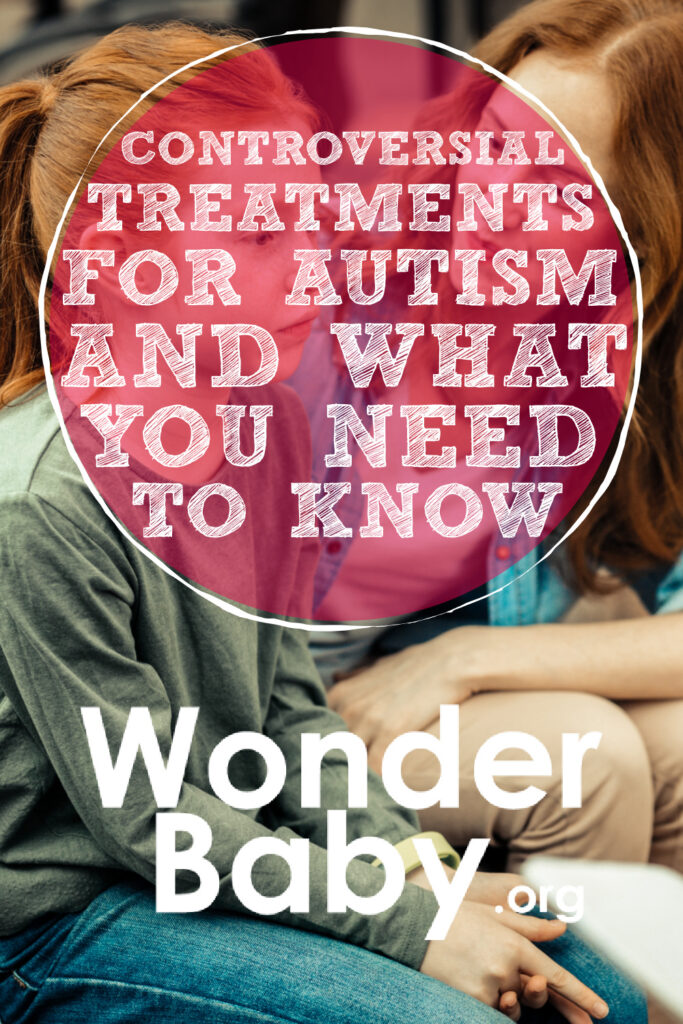
Related Posts
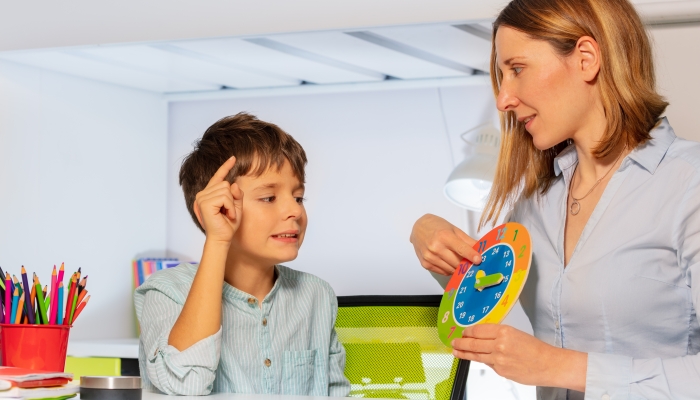
Autism
Developing Time Management Skills in Children with Autism: 7 Tips
Learn how you can use structure and visual aids to help your child with autism learn time management skills.
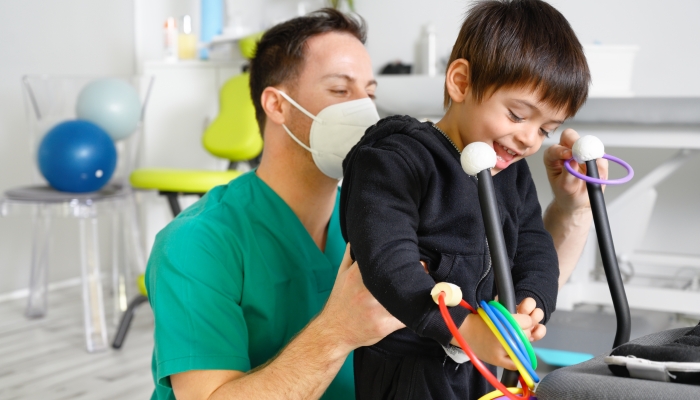
Autism
Occupational Therapy for Children with Autism: How It Can Make a Difference
Children with autism face challenges in many different areas. Occupational therapy can help children address these difficulties while having fun!

Autism, Behavior
OCD vs Autism in Children: How To Tell the Difference
OCD and ASD are fundamentally different, but their symptoms are very similar. Learn how to tell the difference to support your child.